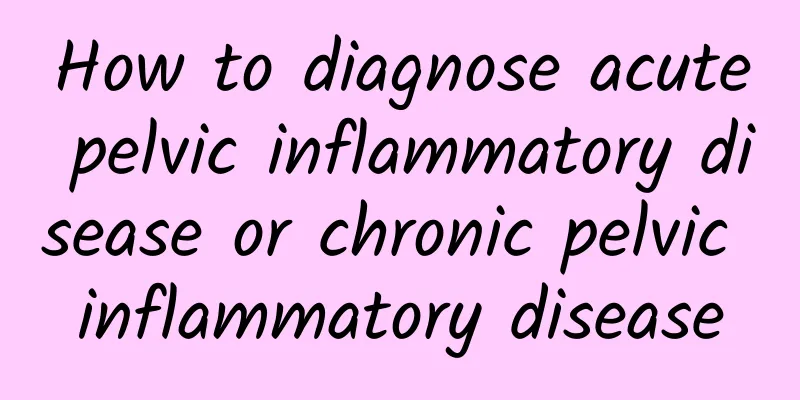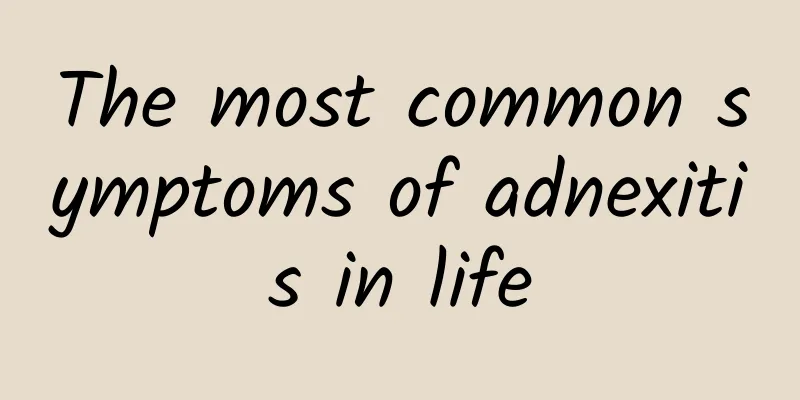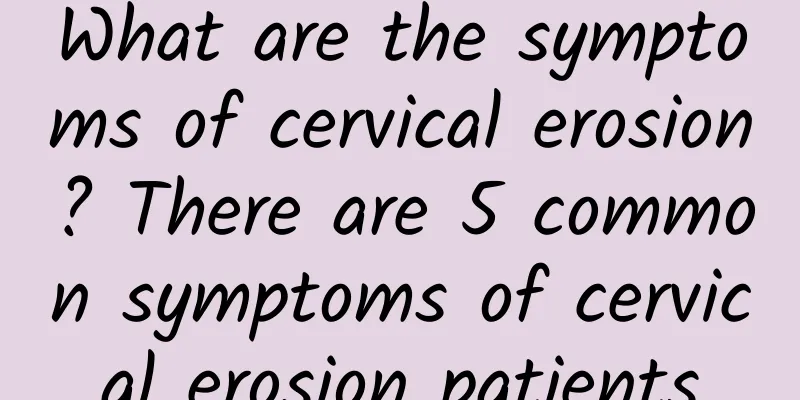How to diagnose acute pelvic inflammatory disease or chronic pelvic inflammatory disease

|
How to diagnose acute pelvic inflammatory disease or chronic pelvic inflammatory disease? Acute and chronic pelvic inflammatory disease can be diagnosed based on medical history, symptoms and signs. However, differential diagnosis must be done well. 1. Symptoms of acute pelvic inflammatory disease Acute and severe illness may cause lower abdominal pain, fever, chills, headache, and loss of appetite. During examination, the patient is found to be acutely ill, with high temperature, rapid heart rate, muscle tension, tenderness, and rebound pain in the lower abdomen. Pelvic examination: There is a large amount of purulent secretions in the vagina with obvious tenderness, tenderness and rebound pain in the uterus and bilateral adnexa, or thickening of one side of the adnexa. The main diagnoses of acute pelvic inflammatory disease include acute appendicitis, ectopic pregnancy, ovarian cyst pedicle torsion, etc. 2. Symptoms of chronic pelvic inflammatory disease The disease progresses slowly and lasts a long time. The systemic symptoms are mostly not obvious, but may include low fever, fatigue, and lower abdominal pain. During examination, the uterus is often posterior, with limited movement or fixed adhesions. The main diagnoses of chronic pelvic inflammatory disease are: endometriosis and ovarian cancer. Pelvic inflammatory disease hazards Acute pelvic inflammatory disease may cause nausea, abdominal distension, vomiting, diarrhea, etc. when there is peritonitis. When pus is formed, there may be a lower abdominal mass and local compression and irritation symptoms. If the mass is located in the front, there may be dysuria, frequent urination, urinary pain, etc., and if the mass is located in the back, it may cause diarrhea. Acute pelvic inflammatory disease may cause diffuse peritonitis or sepsis and even septic shock. Chronic inflammation leads to pelvic congestion and menorrhagia, so the consequences of chronic pelvic inflammatory disease are menstrual disorders when ovarian function is damaged, and infertility when fallopian tube adhesions are blocked. |
<<: How to treat menopausal irregular menstruation
>>: How many days after ectopic pregnancy surgery?
Recommend
Atractylodes macrocephala, ginger and jujube paste can be used for the dietary treatment of cervical erosion
Patients with cervical erosion can choose appropr...
What causes uterine fibroids? What are the symptoms of uterine fibroids?
What causes uterine fibroids? Understanding their...
What should patients with acute adnexitis pay attention to?
What should patients with acute adnexitis pay att...
What is cervical hypertrophy? Understand the causes of cervical hypertrophy
Although cervical hypertrophy is not uncommon in ...
How to correctly diagnose cervical hypertrophy?
Only by making a good diagnosis of cervical hyper...
How to care for women after cervical erosion surgery 4 postoperative care measures for cervical erosion
Cervical erosion is a common gynecological diseas...
How does pelvic inflammatory disease develop?
Pelvic inflammation is often caused by bacterial ...
What foods are good for cervical warts
The incidence of cervical warts is very high in m...
What is the cause of moderate chronic cervical erosion? Uncover the cause of moderate chronic cervical erosion
Usually, many reasons may cause women to develop ...
What causes ovarian cysts?
What causes ovarian cysts? There are many factors...
Common symptoms of cervicitis include increased leucorrhea
Common symptoms of cervicitis include increased v...
Can the cold wave that makes you shiver burn fat and help you lose weight? Research: Low temperature promotes irisin secretion and helps burn brown fat
The cold wave is coming again, and it’s as cold a...
Experts explain what painless abortion is all about?
Do you know what the popular painless abortion is...
What are the dietary remedies for congenital absence of vagina?
Gynecological diseases are quite annoying for wom...
How much do you know about the symptoms caused by ovarian cysts?
Ovarian cysts are a disease that has no obvious s...









